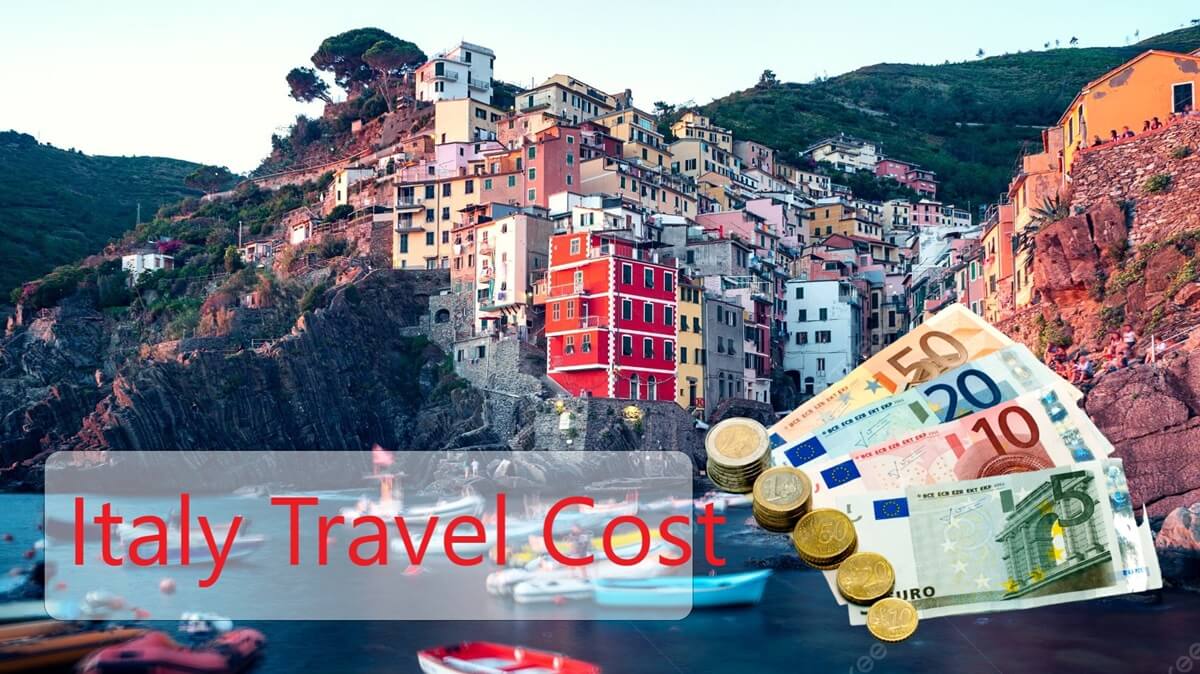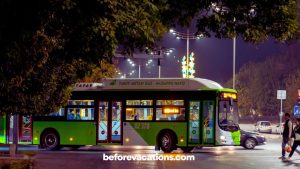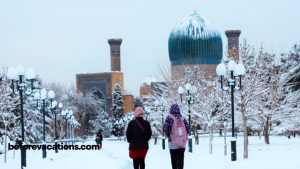Italy, a land of unparalleled beauty and captivating experiences, often stirs dreams of effortless indulgence. Yet, turning those dreams into reality requires smart planning, especially when it comes to your finances.
Understanding money and costs in Italy is crucial for a stress-free and enjoyable trip, ensuring your budget aligns with your travel desires. From the price of a Roman espresso to the cost of a gondola ride in Venice, every euro spent contributes to your adventure.
This comprehensive guide will demystify Italian travel expenses, covering currency, payment methods, typical costs for accommodation, food, and transport, and offering valuable tips to help you manage your budget effectively. Prepare to explore Italy confidently, knowing you’re making the most of every euro.
Why Understanding Money and Costs in Italy is Essential
Effective financial planning is a cornerstone of any successful trip. Italy’s charm is undeniable, but without a clear grasp of typical expenses, your budget can quickly spiral. Understanding money and costs in Italy allows you to:
- Set Realistic Expectations: Know what to anticipate for daily expenses, from major cities to smaller towns.
- Avoid Surprises: Be aware of potential hidden costs, tourist taxes, or common payment practices.
- Optimize Your Spending: Identify areas where you can save without compromising your experience.
- Enhance Your Enjoyment: Reduce financial stress, allowing you to focus on the beauty and culture around you.
This guide aims to equip you with the knowledge needed to navigate Italy’s financial landscape. It helps you prioritize your spending, find value, and ensure your Italian adventure is as rich as it is rewarding.
Currency and Payments: Navigating Transactions in Italy
Italy uses the Euro (€) as its official currency. Understanding how to pay and manage your money is the first step in budgeting for your trip.
The Euro: Your Currency in Italy
- Denominations: Euros come in banknotes of €5, €10, €20, €50, €100, €200, and €500. Coins are €1, €2, and cents (1, 2, 5, 10, 20, 50 cents).
- Exchange Rates: Exchange rates fluctuate daily. Check current rates before your trip to understand the value of your home currency against the Euro. Avoid exchanging large amounts of cash at airports as rates are often unfavorable.
- ATMs (Bancomat): ATMs, known as Bancomat, are widely available in cities and towns across Italy. They offer the best exchange rates, directly linked to interbank rates. Inform your bank of your travel plans to avoid card freezing. Be aware of potential foreign transaction fees from your home bank and ATM withdrawal fees from the Italian bank (though many Italian banks do not charge these).
Payment Methods: Cash vs. Card
While Italy is modernizing, a mix of cash and card is often preferred.
- Credit/Debit Cards: Major credit cards (Visa, Mastercard) are widely accepted in hotels, larger restaurants, major shops, and supermarkets. American Express and Diners Club are less commonly accepted. Always have a PIN ready, as signature-only transactions are rare.
- Contactless Payments: Contactless payment (tap-to-pay) is increasingly common, especially in larger cities and modern establishments.
- Cash: Cash remains king for smaller purchases. You’ll need it for street vendors, small bacari (wine bars), local markets, taxis (though some accept card), and independent gelato shops. Carrying smaller euro denominations (€5, €10, €20 notes) is always useful. Some places might have a minimum charge for card payments.
- “No Cash, No Card”: It’s always wise to ask “Posso pagare con la carta?” (Can I pay by card?) or “Solo contanti?” (Only cash?) if unsure, especially in smaller, local establishments.
Tips for Payments:
- Notify Your Bank: Always inform your bank and credit card companies of your travel dates and destinations. This prevents security flags that might block your transactions.
- Carry Small Bills: Break larger notes at major shops or supermarkets. Many small businesses prefer not to handle €50 or €100 notes for small purchases.
- Travel Money Cards: Consider pre-loaded travel money cards in Euros for better budgeting and security, as they limit your exposure if stolen.
Typical Costs: Budgeting for Your Italian Adventure
Understanding money and costs in Italy requires a breakdown of the primary expenses you’ll encounter. Prices vary significantly by region, city, and season. Rome, Florence, and Venice tend to be more expensive than southern Italy or rural areas.
Accommodation Costs
Accommodation will likely be your largest expense. Prices fluctuate wildly based on location, season, and type of property.
- Budget (Hostels/Guesthouses):
- Hostel dormitory bed: €25 – €60 per night in major cities.
- Basic guesthouse/B&B room: €60 – €120 per night for a double, depending on location and amenities.
- These are best for budget-conscious solo travelers or small groups.
- Mid-Range (3-Star Hotels/Comfortable B&Bs):
- €120 – €250 per night for a comfortable double room.
- Expect decent amenities, often including breakfast.
- These are ideal for couples or families seeking comfort without extravagance.
- Luxury (4-5 Star Hotels/Boutique Properties):
- €250 – €800+ per night. Prices can soar into thousands for top-tier properties in prime locations.
- Expect impeccable service, premium amenities, and often historic settings.
- These are best for honeymoons, special occasions, or travelers seeking indulgence.
Tips for Accommodation Savings:
- Book Early: Always book well in advance, especially for peak seasons.
- Travel Off-Season: Shoulder seasons (spring/autumn) or winter offer better rates.
- Consider Apartments: For longer stays, apartments can be more cost-effective, especially for families or groups, allowing for self-catering.
- Stay Outside City Center: Areas just outside the absolute heart of major cities (e.g., Trastevere in Rome, Oltrarno in Florence, Cannaregio/Castello in Venice) often offer better value with good transport links.
Food and Drink Costs
Eating in Italy can be surprisingly affordable or incredibly expensive, depending on your choices.
- Budget (Street Food/Supermarkets/Picnics):
- Espresso at a bar (standing): €1 – €1.50.
- Gelato: €2.50 – €5 for a small/medium.
- Pizza slice/Panini: €4 – €8.
- Supermarket supplies for a picnic: €10 – €15 per person per day.
- Best for budget travelers and quick, delicious meals.
- Mid-Range (Trattorias/Osterias):
- Pasta dish: €10 – €18.
- Main course (meat/fish): €18 – €30.
- House wine (carafe): €8 – €15.
- Full meal (starter, main, wine): €30 – €60 per person.
- These local eateries offer authentic, delicious food at reasonable prices.
- Luxury (Fine Dining):
- Multi-course meal at a high-end restaurant: €80 – €200+ per person (excluding wine).
- Best for special culinary experiences.
Tips for Food Savings:
- Eat Like a Local: Seek out trattorias, osterias, and pizzerias away from main tourist squares.
- Lunch Deals: Many restaurants offer menu del giorno (set lunch menus) that are more affordable than dinner.
- Aperitivo: In northern Italy, enjoy aperitivo (pre-dinner drinks with complimentary snacks) for a light, affordable evening meal.
- Water: Ask for tap water (acqua del rubinetto) if available and permitted, otherwise bottled water (acqua naturale for still, acqua frizzante for sparkling) is common.
Transportation Costs (Local)
- Single Public Transport Ticket (bus/metro/tram): €1.50 – €2.50 per ride.
- Daily Pass: €7 – €10 (unlimited rides for 24 hours).
- Multi-Day Passes: Cost-effective if you use public transport frequently (e.g., 3-day Venice vaporetto pass).
- Regional Trains: Variable, but generally affordable for short distances (€5-€20).
- High-Speed Trains: Can be expensive if booked last minute (€50 – €100+ for major routes), but cheaper if booked in advance.
- Taxis: Start at around €5-€10, then by meter. Can quickly add up, especially with traffic.
- Vaporetto in Venice: Single ride is expensive (€9.50), passes are essential.
Tips for Transport Savings:
- Walk Often: Many Italian cities are best explored on foot.
- Buy Passes: Invest in daily or multi-day passes if you plan extensive public transport use.
- Validate Tickets: Always validate public transport tickets immediately upon boarding to avoid fines.
- Consider a Rail Pass: If covering significant distances by train, a Eurail Pass might save money.
Attraction and Activity Costs
Entry fees for museums, galleries, and archaeological sites contribute significantly to your budget.
- Major Museums/Sites: €15 – €30+ per person (e.g., Colosseum, Uffizi Gallery, Vatican Museums).
- Smaller Museums/Churches: €5 – €15 per person.
- Tours/Excursions: Gondola rides (Venice) have fixed rates (around €80-€120). Guided tours can range from €30 – €100+ depending on duration and exclusivity.
- Regional Passes: City passes (e.g., Roma Pass, Firenze Card) can offer combined entry to attractions and public transport, providing savings if you plan to visit many sites. Calculate if they are worth it for your specific itinerary.
Tips for Attraction Savings:
- Free Activities: Explore churches (many offer free entry), walk through piazzas, enjoy parks, and visit local markets. These are some of the best things to do in Italy without spending money.
- City Passes: Evaluate if a city pass makes sense for your planned activities.
- Student/Senior Discounts: Carry relevant IDs for potential discounts.
- Museum-Free Days: Some museums offer free entry on the first Sunday of the month (check specific museum schedules).
Budgeting Strategies: Making Your Money Go Further
Effective budgeting ensures you get the most out of your money and costs in Italy. Here are key strategies.
Setting Your Daily Budget
A rough guide to daily spending per person (excluding flights and long-distance trains):
- Budget Traveler: €60 – €100 per day (hostel, street food, self-catering, public transport, free/cheap attractions).
- Mid-Range Traveler: €100 – €250 per day (mid-range hotel/B&B, mixed dining, public transport/some taxis, paid attractions).
- Luxury Traveler: €250+ per day (high-end hotel, fine dining, private transport, tours).
These are just estimates; actual costs depend heavily on your choices and travel style.
Tips to Save Money on Your Italian Trip
- Travel Off-Season: As mentioned, shoulder or off-peak seasons offer significantly lower prices for flights, accommodation, and sometimes even attractions.
- Eat Smart: Balance restaurant meals with picnics from local markets or supermarket finds. Choose trattorias over fine dining every night.
- Walk More: It’s free, healthy, and the best way to discover hidden gems.
- Use Public Transport: Rely on trains, buses, and metros for inter-city and intra-city travel. Buy passes where applicable.
- Drink Tap Water: Italian tap water is generally safe and delicious. Carry a reusable bottle.
- Look for Free Activities: Many churches, parks, and piazzas are free to enter and offer incredible cultural experiences.
- Self-Cater: If staying in an apartment with a kitchen, cooking some of your meals can save a lot.
- Avoid Tourist Traps: Restaurants directly adjacent to major attractions often have higher prices and lower quality. Wander a few blocks away for better value.
Final Thoughts on Money and Costs in Italy
Navigating the money and costs in Italy does not have to be a source of stress. With careful planning and smart choices, you can experience the wonders of this incredible country regardless of your budget. Italy offers diverse options, allowing you to tailor your trip to your financial comfort zone.
From the grand luxury of a Venetian palazzo to the charming simplicity of a Tuscan farmhouse, every euro spent should contribute to an enriching and memorable journey. Focus on authentic experiences, savor every meal, and let the magic of Italy unfold without constant financial worry.
Ready to plan your budget-friendly Italian adventure? Start mapping out your expenses today and enjoy the best of Italy without breaking the bank!











